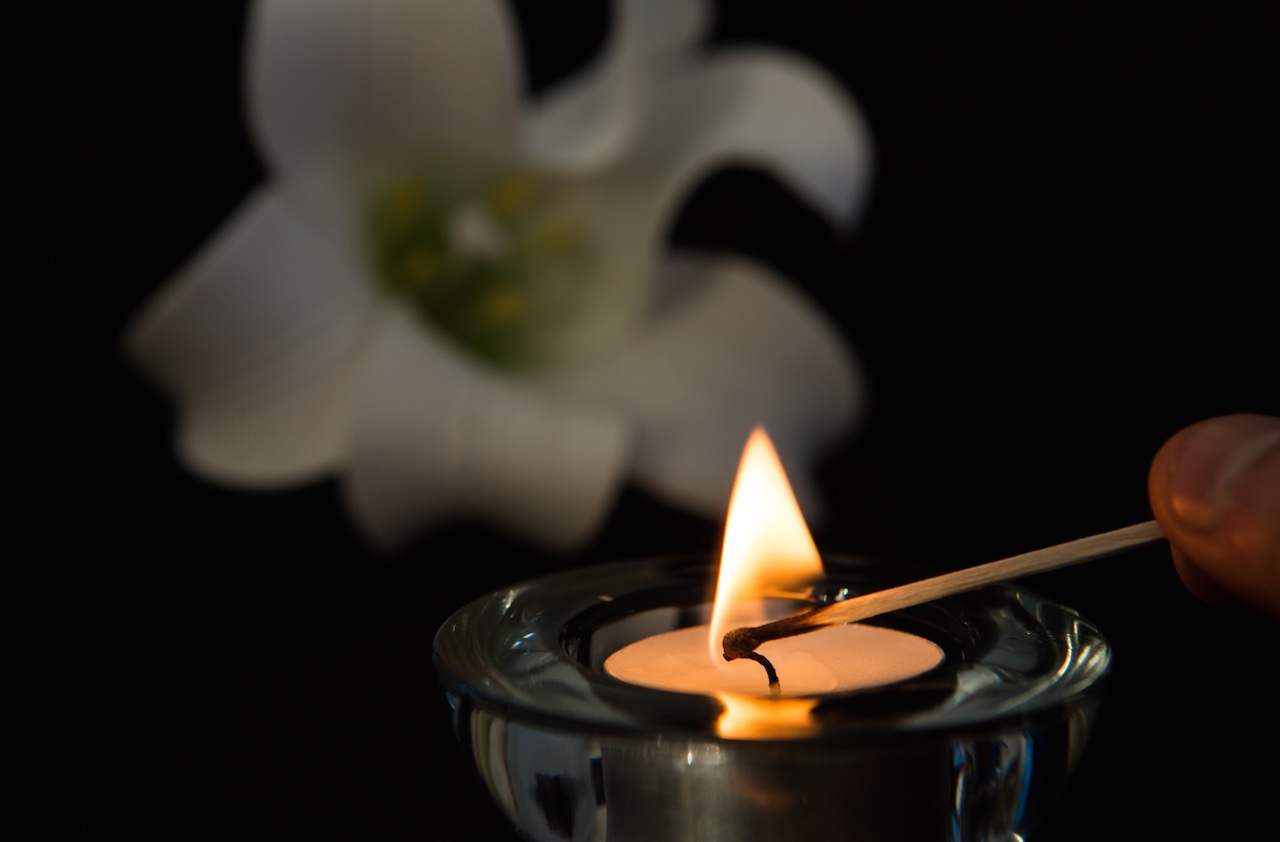Celebrating Life When Death Draws Near
A 'living funeral' provides an opportunity for the terminally ill to gather with close friends and relatives to share memories and stories.

Beverly Hills interior designer Bernardo Puccio loves to throw a fabulous party. So a decade ago, when his doctors told him that without a liver transplant he would die in a few months, he spared no expense to throw himself an end-of-life celebration. Puccio had decided against the transplant because he didn't think he would survive it.
Puccio hired a caterer, a florist, an opera singer and a videographer to produce a documentary about his life with his longtime partner. He arranged for valet parking for his 100 guests at the Sunday afternoon garden party. "It was awesome," says Puccio, 71, who's healthy after eventually opting for the liver transplant. "I outdid myself. It was so touching and real."
So-called living funerals are "on the rise," says Denise Carson, author of Parting Ways (University of California Press, $35), which explores alternatives to traditional end-of-life mourning rituals. "Some look like a cross between a wedding and a funeral," she says.
From just $107.88 $24.99 for Kiplinger Personal Finance
Become a smarter, better informed investor. Subscribe from just $107.88 $24.99, plus get up to 4 Special Issues

Sign up for Kiplinger’s Free Newsletters
Profit and prosper with the best of expert advice on investing, taxes, retirement, personal finance and more - straight to your e-mail.
Profit and prosper with the best of expert advice - straight to your e-mail.
These celebrations provide an opportunity for someone who is near death to gather close friends and relatives and share memories. No rules or customs govern these get-togethers. They can take place anywhere, from a community center to a church or synagogue to a funeral home. "I've seen the honoree dressed in everything from a hospital gown to a tuxedo," Carson says. "Others are more somber, with prayers, psalms, anointing and last rites by clergy."
Some attendees bring mementos, such as photos from a family vacation, or poems to recite. In the 1997 bestseller Tuesdays With Morrie by Mitch Albom, the book's subject, Morrie Schwartz, who knows his death is imminent, holds a living funeral in his home because he doesn't want to miss out on tributes to himself.
Carson watched both her parents die young. Her father died at 37, before she could fully learn about his life story. When her mother was diagnosed with cancer 12 years later, Carson was determined to do things differently. She interviewed her mother to learn everything possible about her. A few days before her mother's death in 2002, Carson assembled 30 friends and relatives in her mother's house. As her mother sat on a hospital bed in the center of the living room, attendees shared stories and looked through photo albums. "There were tears, but my mother was able to talk and respond," Carson says. "Why wait if you know someone is dying? Saying how that person changed your life is transforming."
Some people may feel it's disrespectful to throw a party while a person is dying. "But the reason to have it when the person is alive is so the person can attend," says Sharon Mace, owner of A Special Touch Funeral & Cremation Service, in Dublin, Cal. Mace organized her first living funeral for a client 12 years ago. "It was sad, yet it wasn't," she says. "It's a good way to control what happens to you."
Bringing some control to life's most uncontrollable event can be a great comfort to the dying person and loved ones. A living funeral shares some characteristics with "dignity therapy," which was developed by Dr. Harvey Max Chochinov, a professor of psychiatry at the University of Manitoba.
Dignity therapy is a brief psychological intervention that addresses the dying patient's need to feel that life has meaning. During a 30- to 60-minute session, the therapist asks questions that encourage the patient to talk about what matters most. The conversation is recorded, transcribed, edited and then returned to the patient. Many choose to share the document with family and friends. "People want to make sure that who they are gets transmitted to the next generation," says Chochinov, author of Dignity Therapy (Oxford University Press, $56).
For both the dying person and the bereaved, a living funeral offers a special opportunity during a time of grief. "Morbid? For some it might be," Carson says. "But when is the right time to say goodbye, or the last 'I love you' or ‘I'm sorry'? My mom was grateful for it, and I'm glad I wasn't alone."
Profit and prosper with the best of Kiplinger's advice on investing, taxes, retirement, personal finance and much more. Delivered daily. Enter your email in the box and click Sign Me Up.
-
 How to save for college and retirement at the same time
How to save for college and retirement at the same timeSponsored Consider these steps to balance two of life’s most significant financial goals.
-
 8 ways to potentially lower your taxes
8 ways to potentially lower your taxesConsider these strategies to potentially reduce your taxes.
-
 6 common tax mistakes for investors to avoid
6 common tax mistakes for investors to avoidSponsored Watch for these common tax mistakes to avoid for investors, to help manage the impact of taxes on your portfolio.
-
 457 Plan Contribution Limits for 2026
457 Plan Contribution Limits for 2026Retirement plans There are higher 457 plan contribution limits in 2026. That's good news for state and local government employees.
-
 Medicare Basics: 12 Things You Need to Know
Medicare Basics: 12 Things You Need to KnowMedicare There's Medicare Part A, Part B, Part D, Medigap plans, Medicare Advantage plans and so on. We sort out the confusion about signing up for Medicare — and much more.
-
 The Seven Worst Assets to Leave Your Kids or Grandkids
The Seven Worst Assets to Leave Your Kids or Grandkidsinheritance Leaving these assets to your loved ones may be more trouble than it’s worth. Here's how to avoid adding to their grief after you're gone.
-
 SEP IRA Contribution Limits for 2026
SEP IRA Contribution Limits for 2026SEP IRA A good option for small business owners, SEP IRAs allow individual annual contributions of as much as $70,000 in 2025, and up to $72,000 in 2026.
-
 Roth IRA Contribution Limits for 2026
Roth IRA Contribution Limits for 2026Roth IRAs Roth IRAs allow you to save for retirement with after-tax dollars while you're working, and then withdraw those contributions and earnings tax-free when you retire. Here's a look at 2026 limits and income-based phaseouts.
-
 SIMPLE IRA Contribution Limits for 2026
SIMPLE IRA Contribution Limits for 2026simple IRA For 2026, the SIMPLE IRA contribution limit rises to $17,000, with a $4,000 catch-up for those 50 and over, totaling $21,000.
-
 457 Contribution Limits for 2024
457 Contribution Limits for 2024retirement plans State and local government workers can contribute more to their 457 plans in 2024 than in 2023.
-
 Roth 401(k) Contribution Limits for 2026
Roth 401(k) Contribution Limits for 2026retirement plans The Roth 401(k) contribution limit for 2026 has increased, and workers who are 50 and older can save even more.